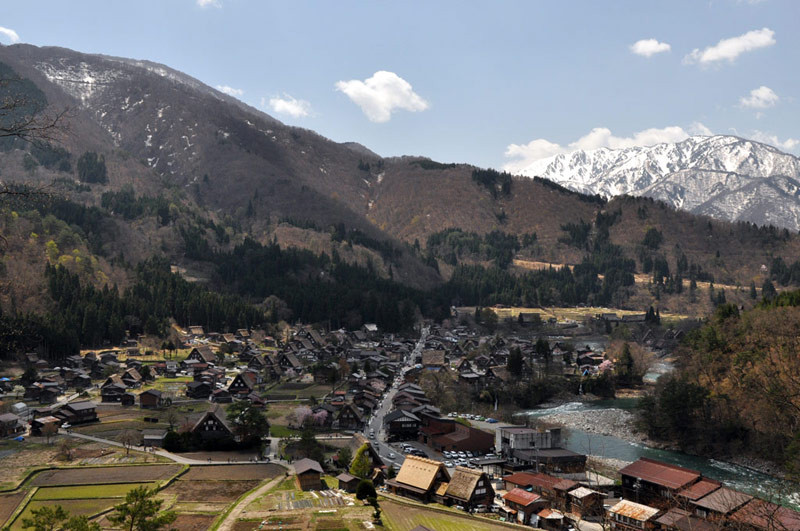Shirakawa-go
UNESCO Village of Praying Hands
Nestled in a picturesque valley on the northern edge of Gifu Prefecture, Shirakawa-go is one of several secluded villages whose gassho-zukuri farmhouses were collectively recognized as a UNESCO World Heritage Site in 1995. The name gassho-zukuri describes the characteristic shape of the houses’ thatched roofs, which, in order to prevent the over-accumulation of snow in winter, have been constructed at a steep angle that gives them the profile of a pair of hands in prayer. The term gassho literally means ‘praying hands,’ while zukuri is a suffix indicating ‘construction.’ The spacious attics also formed the basis of the region's traditional industry, silkworm production.
The largest village in Shirakawa-go is Ogimachi, where visitors can meander through dozens of carefully-preserved houses set along a terraced plateau by the clear waters of the Sho River.
With some over 250 years old, many of the farmhouses now function as museums, generally open from 9:00 a.m. to 5:00 p.m. daily, each of which can be entered for ¥300. Kanda-ke House offers a clear view of the nearby houses from its spacious second floor, while admission to Myozenji-ke House includes entrance to the hall of adjacent Myozenji Temple, which shuns the typical tile roof to sport an appropriate cap of gassho-zukuri. Beside the Shirakawa-go bus station, an open-air museum (admission ¥500) is home to several houses from neighboring villages that have been moved here in order to preserve them from destruction.
Including a twenty-minute trek to the top of Shiroyama Viewpoint, all of Ogimachi can be covered in about four hours, still allowing a few minutes to nose around the cute woodworks available in the omiyage (souvenir) shops.
Those interested in a longer stay can take advantage of one of several farmhouses that have even been converted to minshuku (guest houses). The night view in winter is particularly stunning, with the wedge-shaped houses all covered in a heavy mantle of snow.
Shirakawa-go can be accessed by bus from Kanazawa Station in Ishikawa Prefecture (1 hr 15 min, ¥3200 round-trip), passing through lovely scenes of rivers, rice paddies and rolling hills before descending into the valley. The village can also be accessed from Nagoya, but there is only one bus daily from Meitetsu Bus Center near Nagoya Station (3 hrs, ¥3500 one-way).
From Ogimachi, buses also run to Gokayama in Toyama Prefecture, where the villages of Ainokura and Suganuma offer gassho-zukuri in a more intimate environment, less diluted by the presence of modern buildings. Be aware, however, that there are only four round-trip buses to Gokayama each day.
Tourist Information: www.japan-guide.com
Also in the Area
Published February 2011. Photo © 2010 Michael Kanert.




